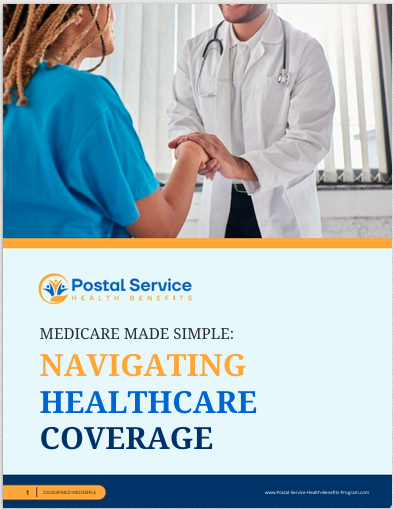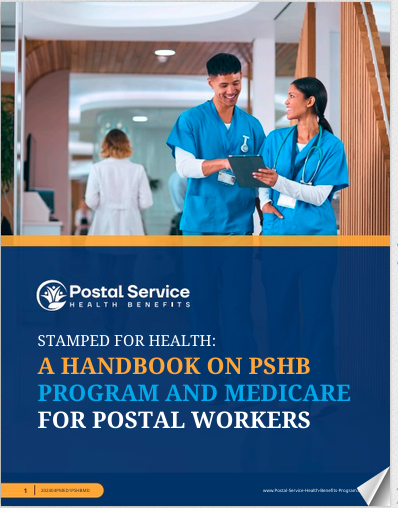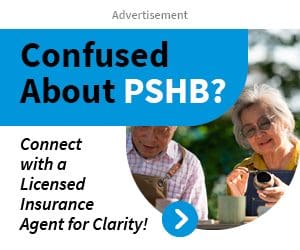Key Takeaways
-
PSHB coverage is specifically designed for USPS employees, retirees, and their eligible family members, offering comprehensive health benefits tailored to postal workers‘ needs.
-
Understanding your eligibility and the coverage details ensures you make informed decisions about your healthcare.
What Is PSHB and Why Does It Matter?
The Postal Service Health Benefits (PSHB) program is a health coverage plan exclusive to USPS employees, retirees, and their families. Established to replace the Federal Employees Health Benefits (FEHB) program for postal workers, PSHB is part of the broader effort to provide tailored health benefits that meet the unique needs of the postal workforce. If you’re currently working for USPS or retired from it, this program is central to your healthcare planning in 2025 and beyond.
Eligibility for PSHB: Who Qualifies?
Before diving into what PSHB covers, it’s crucial to determine if you’re eligible. Here’s a breakdown:
Current USPS Employees
You qualify for PSHB if you are a full-time or part-time career employee. Temporary or non-career employees may not be eligible unless specified by USPS employment terms.
USPS Retirees
If you’ve retired from USPS, you’re eligible for PSHB. However, if you retired on or before January 1, 2025, and are Medicare-eligible, you’re not required to enroll in Medicare Part B but can still enjoy the benefits of PSHB.
Eligible Family Members
Family members eligible for PSHB include:
-
Your spouse.
-
Children under 26 years old.
-
Disabled children over 26 who meet specific dependency requirements.
Special Considerations
Eligibility may extend to specific family circumstances, such as foster children or grandchildren, provided they meet dependency criteria.
Key Dates and Enrollment Periods
To maintain your PSHB coverage, it’s vital to understand the enrollment timelines:
-
Open Season: Every year, the Open Season runs from mid-November to mid-December, allowing you to review or make changes to your plan.
-
Initial Enrollment Period: Newly eligible employees or retirees can enroll within 60 days of becoming eligible.
-
Qualifying Life Events (QLEs): Certain life changes, like marriage or the birth of a child, allow you to modify your coverage outside Open Season.
What PSHB Coverage Includes
PSHB plans are designed to offer comprehensive healthcare benefits. Here’s a detailed look:
Medical Services
You’ll have access to a wide range of medical services, including:
-
Preventive care, like annual checkups and vaccinations.
-
Specialist visits for specific health concerns.
-
Diagnostic services such as lab tests and imaging.
Prescription Drug Coverage
PSHB plans include robust prescription drug benefits. For Medicare-eligible members, the integration with Medicare Part D ensures cost-effective options for medications, including a $2,000 annual out-of-pocket cap on prescription drug costs.
Hospitalization
Your plan covers hospital stays, including surgery, recovery, and other inpatient services. Skilled nursing care and rehabilitation services are also part of the package.
Mental Health and Substance Use Support
Mental health services, such as therapy sessions and psychiatric care, are covered. Support for substance use disorders, including treatment programs, is also available.
Vision and Dental Benefits
Many PSHB plans include supplemental vision and dental coverage, ensuring routine eye exams, glasses, and dental cleanings are accessible.
Telehealth Services
Virtual healthcare options are part of the PSHB offerings, making it easier to consult with healthcare providers without leaving your home.
Costs and Contributions
While specific plan premiums vary, the PSHB program is structured to make healthcare affordable for postal workers. The federal government contributes about 70% of the total cost of premiums. Here’s a general breakdown:
-
Premium Sharing: You’ll pay a portion of your premium, depending on the plan and coverage type (e.g., Self Only, Self Plus One, or Self and Family).
-
Deductibles and Copayments: Each plan has its own cost-sharing structure, including annual deductibles, copayments, and coinsurance rates.
-
Out-of-Pocket Maximums: Plans set annual caps on your out-of-pocket expenses, ensuring predictable costs for covered services.
How Medicare Works with PSHB
If you’re retired and eligible for Medicare, PSHB integrates seamlessly with Medicare Part B. Here’s how it works:
-
Coordination of Benefits: Medicare becomes your primary payer, and PSHB acts as secondary coverage, reducing your out-of-pocket costs.
-
Part B Requirement: Some retirees must enroll in Medicare Part B to maintain PSHB coverage, depending on their retirement date and age.
-
Prescription Drug Savings: Enrollment in Medicare Part D through your PSHB plan offers significant savings on medications.
Enrolling in PSHB: What You Need to Do
To enroll in PSHB or update your plan, follow these steps:
-
Review Your Eligibility: Ensure you meet the criteria for enrollment based on your employment or retirement status.
-
Explore Plan Options: Compare available plans to find the one that best suits your healthcare needs and budget.
-
Complete Enrollment: Use the designated enrollment platform during Open Season or within the specified timeframe for QLEs.
-
Monitor Changes: Keep an eye on annual updates to premiums, benefits, and out-of-pocket costs.
Common Questions About PSHB
What Happens If I Don’t Enroll?
If you’re eligible but don’t enroll during your initial enrollment period or Open Season, you may lose your opportunity to secure coverage until the next Open Season or a QLE.
Can I Keep My Coverage If I Move?
Yes, PSHB coverage is nationwide, and some plans offer international benefits for travel.
Do I Need Both PSHB and Medicare?
Having both provides comprehensive coverage and can reduce out-of-pocket expenses. Medicare typically covers services first, while PSHB supplements what Medicare doesn’t cover.
Can I Switch Plans Later?
Yes, you can change plans during Open Season or after a QLE.
Making the Most of Your PSHB Coverage
To maximize your benefits:
-
Schedule preventive care appointments early in the year.
-
Use in-network providers to minimize out-of-pocket costs.
-
Take advantage of telehealth services for convenience.
-
Review your plan annually to ensure it still meets your needs.
Understanding PSHB Is Key to Your Healthcare
Navigating healthcare options can be overwhelming, but understanding PSHB eligibility and benefits empowers you to make informed choices. Whether you’re a USPS employee or retiree, taking the time to review your options ensures you’ll have the coverage you need when it matters most. Don’t miss out on the opportunity to secure your health and well-being—enroll or update your plan today.






